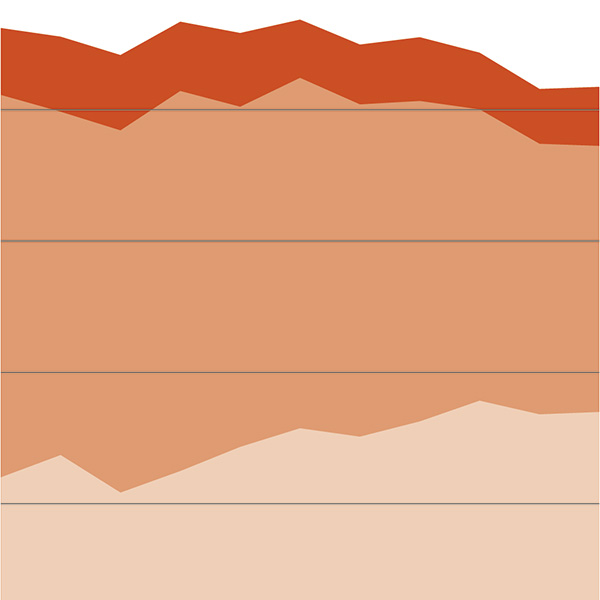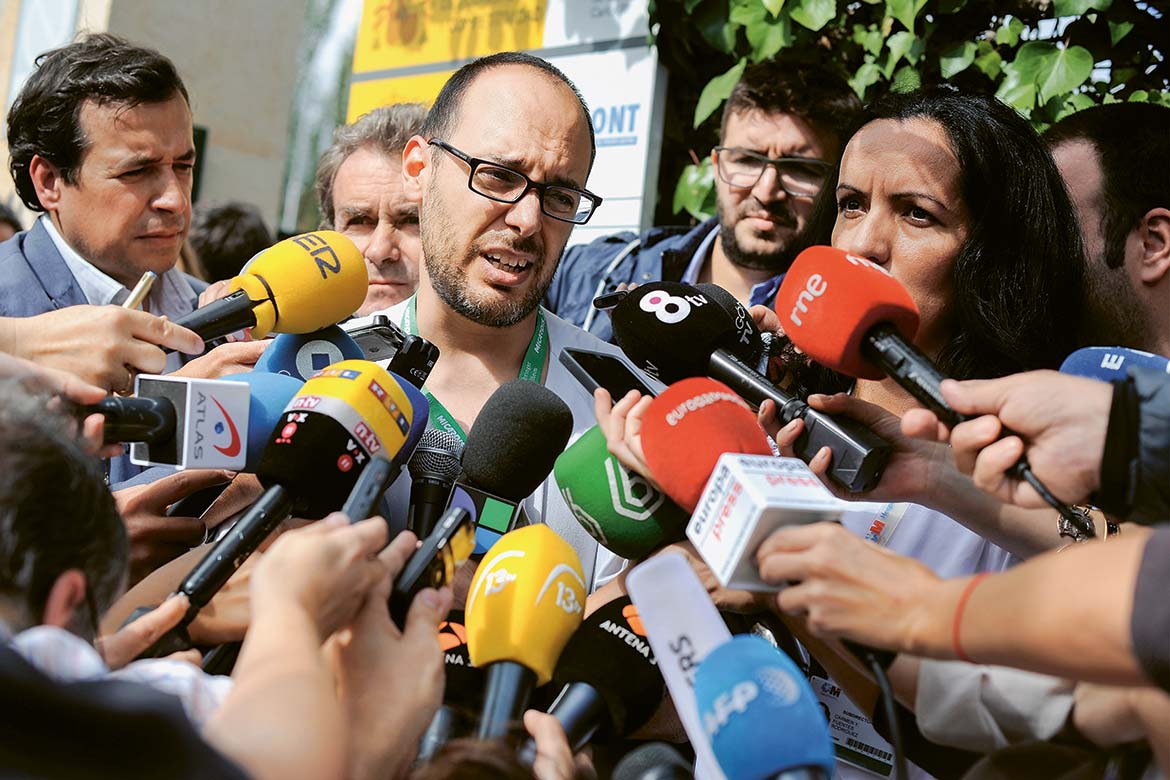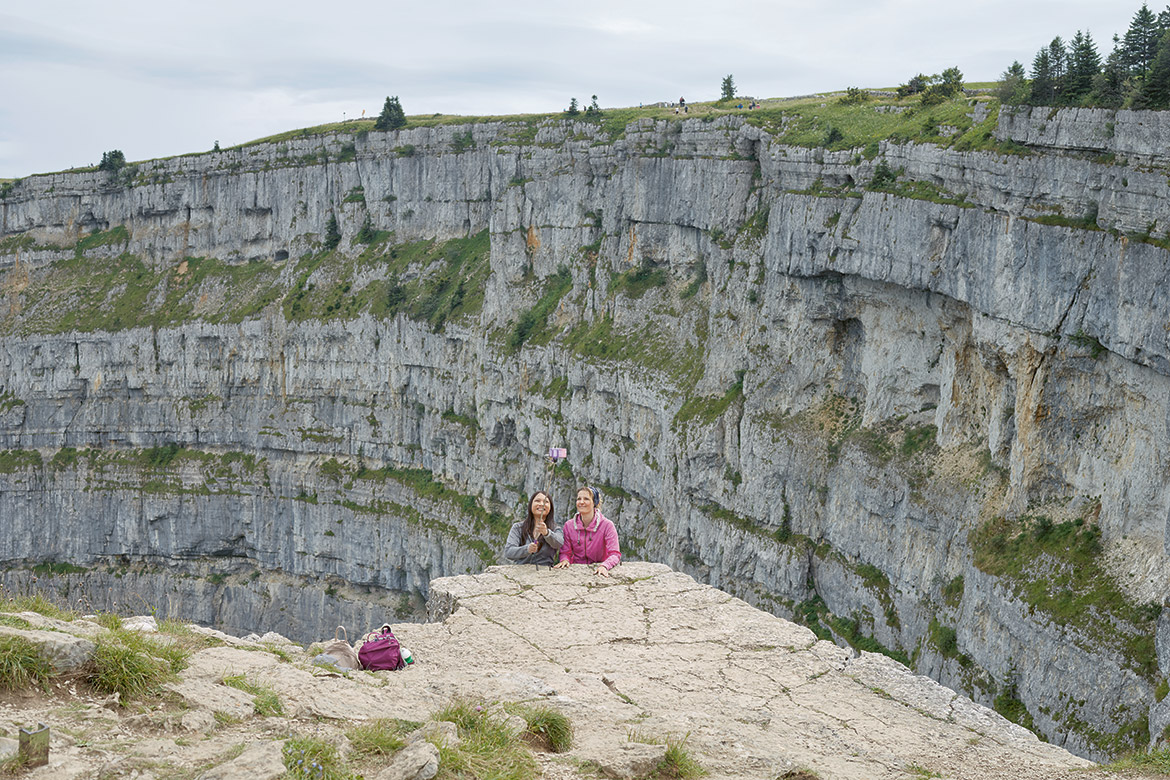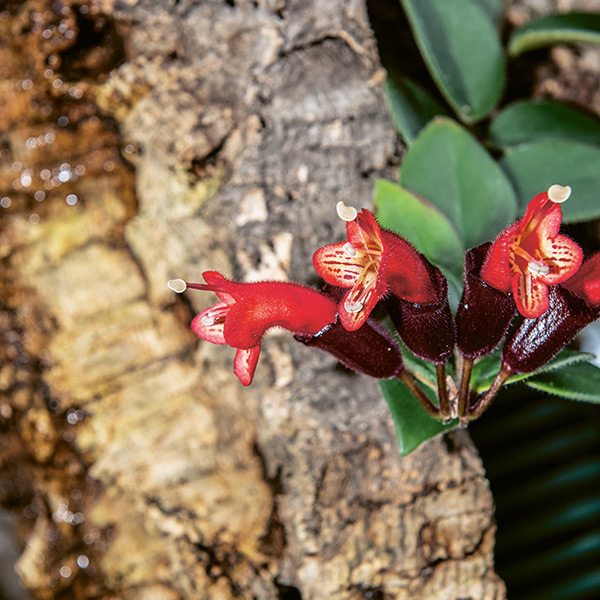Feature: Toxic world
Glyphosate in the jungle of science
Once upon a time, it was regarded as a miracle-worker for getting rid of weeds. Now it is becoming increasingly clear that glyphosate is actually carcinogenic. We take a trip through the regulatory confusion around a herbicide.
Pharma company Cilag – Switzerland
The Swiss scientist Henri Martin synthesises glyphosate for the first-ever time, but finds no pharmaceutical use for it.
Monsanto – USA
John E. Franz invents glyphosate for the second time, and patents it as a herbicide.
Monsanto – USA
Monsanto markets the herbicide in a formula with other excipients under the name ‘Roundup’. Farmers can now refrain from ploughing before sowing.
EPA – USA
The US Environmental Protection Agency classifies glyphosate as having “carcinogenic potential”. One year later, its classification is changed, and in 1991 it declares that there is “evidence of non-carcinogenicity for humans”.
HOW THIS POISON IS USED
The herbicide glyphosate blocks plants from producing essential amino acids. As animals ingest these amino acids from their food, they are unaffected. This is why the substance is popularly used as a replacement for ploughing back weeds; it conserves the soil organisms and saves tractor time. The goal of farmers is to get as high a yield as possible on as small a space as possible. Railway companies also spray considerable amounts of it in order to keep train tracks visible and free of weeds.
Changhua Christian Hospital – Taiwan
Some 20 deaths by poisoning from Roundup are documented for the 1980s. The people in question had drunk over a decilitre of it.
Monsanto – USA
Monsanto brings the first-ever genetically modified soya bean onto the market that is resistant to the herbicide. Treating the soil can now take place after sowing, which helps Roundup to achieve a worldwide breakthrough.
Monsanto – USA
The patent for isopropylamine salt, the form of glyphosate most often used, runs out. The general patent already ran out in 1991.
Greenpeace – worldwide
This environmental organisation publishes a report that questions whether glyphosate is safe and argues against the use of genetically modified plants.
Exponent Inc.– USA
This consultancy publishes an overview study that finds no causal connection between glyphosate and cancer.
Université de Caen – France
The results of a two-year study about feeding Roundup to rats along with genetically modified maize are published. The so-called Séralini Study causes a stir but is highly criticised by the scientific community. It was withdrawn for review but then republished later elsewhere.
Farmers – worldwide
According to one estimate, over 800,000 tonnes of glyphosate are used across the world every year, mostly on fields for farming. It is thus the most widely used herbicide and will remain so for several years.
BfR – Germany
The German Federal Institute for Risk Assessment (BfR) finds no proof in over a thousand studies that glyphosate is more harmful than has been assumed.
WHO – worldwide
The World Health Organization classifies glyphosate as “probably carcinogenic”, the second-highest of four categories, thus the same as red meat. The WHO report is based on some one thousand published studies. This is the first official expert report to reach this conclusion and thereby brings about a fundamental change in the subsequent discussion about glyphosate.
National Council – Switzerland
A motion is proposed to ban glyphosate in Switzerland. The Federal Council rejects it. Just under two years later, the motion is withdrawn.
EFSA – EU
The European Food Safety Authority (EFSA) classifies glyphosate as “unlikely to … pose a carcinogenic threat”. It bases its assessment on 2014 data from the German Federal Institute for Risk Assessment (BfR). It explains its different stance from that of the WHO by stating that the latter did not differentiate between pure glyphosate and that mixed with excipients. The WHO’s expert group later denies this.
Several universities – worldwide
A systematic review of eleven studies finds no connection between the exposure of agricultural workers to glyphosate and cases of lymph node cancer. Three years later, another study comes to a different conclusion.
Greenpeace – The Netherlands
At the Monsanto Tribunal, a symbolic trial organised by environmental activists in Den Haag, the agro-multinational is found guilty of crimes against humanity and against the environment.
Le Monde – France
During a trial in the USA, the newspaper publishes an analysis of the ‘Monsanto Papers’ – over 140 e-mails, most of them internal. They show how Monsanto is trying to exert pressure on the WHO and how it carries out ghost-writing for scientists.
Parliament – EU
Parliamentarians demand a ban on the herbicide by the end of 2022.
FOEN – Switzerland
The Swiss Federal Office for the Environment (FOEN) proposes adjusting the threshold values for chemicals in bodies of water. Instead of introducing an across-the-board measure, the new threshold should reflect the toxicity of the chemical. For most substances, it is a lower value, but for others it is higher, including glyphosate. The consultation process runs until March 2018.
Commission- EU
The European Commission renews the license for the herbicide for another five years.
BLV – Switzerland
The Swiss Federal Office of Agriculture (FOAG) confirms that glyphosate remains permitted in Switzerland. This decision is based on the toxicological assessment of the Swiss Federal Food Safety and Veterinary Office (BLV), which in turn assesses the studies submitted by Monsanto and which has a seat on the expert committees of the European Food Safety Authority (EFSA), the European Chemicals Agency (ECHA) and the Joint Meeting on Pesticide Residues of the WHO.
EPA – EU
The US Environmental Protection Agency classifies glyphosate as “not likely to be carcinogenic”, but admits that there is “potential for effects” on animals and plants. The decision will be further reviewed in 2019.
Grand Council of Vaud – Switzerland
The Grand Council of Vaud adopts a plan of action for reducing the use of glyphosate, and proposes this to the cantonal representatives.
Several universities – USA
A study of the overall meta-relative risk and a meta-analysis of six studies on agricultural workers exposed to glyphosate reach the conclusion that they run a 40 percent higher risk of developing non-Hodgkin lymphoma. A similar study that was carried out three years before and reached a contrary conclusion is not cited.
California Federal District Court – USA
Six jury members decide that glyphosate is responsible for the lymph node cancer of Edwin Hardeman. He used this herbicide privately for 20 years. It is the second of three cases in the USA that have gone against Monsanto.
Science – worldwide
The literature database Scopus provides some 10,000 scientific publications for the search term ‘glyphosate’.
Illustration: CANA atelier graphique




